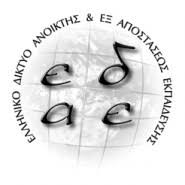Στην εργασία αυτή χρησιμοποιήσαμε διαφορετικά ψηφιακά σενάρια της πλατφόρμας «Αίσωπος», για να μελετήσουμε την εφαρμογή τους στη διδακτική πρακτική. Θέλαμε να διερευνήσουμε αν είναι αρκετοί οι διαθέσιμοι πόροι, ώστε να υλοποιηθούν τα επιλεγμένα σενάρια, και αν μπορούν αυτά να εφαρμοστούν στο σχολικό πλαίσιο. Επίσης επιδιώκαμε να εισάγουμε στη διδασκαλία μας ένα διαφορετικό τρόπο διδακτικής προσέγγισης, που να κινητοποιεί το ενδιαφέρον των μαθητών, αλλά και γιατί διέθεταν οργανωμένο και πρωτότυπο εκπαιδευτικό υλικό. Χρησιμοποιήσαμε τα σενάρια στα μαθήματα Βιολογία, και Γεωγραφία στην Α’ τάξη και Βιολογία στην Β’ και στη Γ’ τάξη. Οι διαπιστώσεις μας ήταν ότι συχνά η δυναμική της τάξης ανατρέπει ακόμα και τα πιο οργανωμένα σχέδια μαθήματος. Η δομή και οργάνωση των ψηφιακών σεναρίων μας επέτρεψαν να κάνουμε προσαρμογές ανάλογα με το χρόνο, και το έμψυχο υλικό της τάξης. Ο τρόπος δουλειάς των μαθητών, και ειδικότερα η ομαδοσυνεργατική ενίσχυσε θετικά το κλίμα της τάξης και συνετέλεσε στη διόρθωση λαθών στη διδασκαλία και την κατανόηση. Παράλληλα μας δόθηκε η δυνατότητα να αναδείξουμε και να διαχειριστούμε παρανοήσεις των μαθητών, ώστε να κάνουμε αποτελεσματικότερη διδασκαλία. Από την πλευρά της χρήσης των διαθέσιμων πόρων, σε κάποιες περιπτώσεις εγκατάστασης λογισμικού, αντιμετωπίσαμε πρόβλημα, ενώ εκτιμούμε ότι πριν την χρήση κάποιας διαδικτυακής πλατφόρμας για πρώτη φορά, θα πρέπει να υπάρχουν οδηγίες. Τέλος ως προς του πόρους θεωρούμε πως τα σενάρια, εύκολα μπορούν να ενταχθούν στη διδασκαλία., γιατί σχεδόν όλες οι σχολικές μονάδες διαθέτουν τέτοια βασική υποδομή.
(EL)
At international as well as at national level, a number of learning subjects has been developed for educational purposes. In the modern digital world there is plenty of digital material that could be used in various ways in education and teaching. Therefore, the teacher’s role shifts from providing knowledge, to designing the teaching process. Appropriate educational planning is required, which will link the available material with appropriate teaching practices and theoretical approaches. Research has demonstrated that educational design should aim for the development, organization and use of digital learning scenarios, that should be structured on the basis of internationally recognized standards, in order to achieve easier and more direct use by the educational community. The Aesopos platform, which is available in the Greek educational community, is an online design and hosting environment for eclasses that have been structured and organized as digital interactive teaching scenarios. In this study, we present our experience emanating from the use of digital scenarios produced on the Aesopos platform, during the school years 2016-2017 and 2017-2018, in order to ascertain their use in the classroom and propose alternative approaches or improvements from the experience that was gathered. In those scenarios, the starting points of each teaching sequence were the students’ pre-existing knowledge as well as their common misconceptions, in the courses of Biology and Geography-Geology, which either hinder or prohibit the teaching sequence itself. In any constructive model of teaching, misconceptions play a key role in educational planning since they delimit both the teaching process and the planning of appropriate activities. We chose to employ lesson plans, first because we wanted to introduce an alternative way of approaching the course that would maintain a high level of students' interest, and second because the lesson plans encompassed original educational material that was very well organized, as a result of an effective educational strategy. The scenarios were used in an experimental lower high school, where children have an enhanced interest in learning and respond positively to activities and assignments that may exhibit a considerable level of difficulty. In the first grade, regarding the lesson of Geography, we employed the following scenarios: 'Temperature - Winds - Rains - Climate”, “Water as element and as a ghost”, “Geological time and Geological history of Earth”, whereas regarding the lesson of Biology we employed the scenario “The Circulatory system”. In the second grade, regarding the Biology lesson, we employed the following scenario: "The Truth About Bacteria". In the third grade, regarding the Biology lesson, we employed the following scenario: 'The organization levels for multi-cellular organisms - Animal tissues”. Our involvement with Aesopos’s lesson plans, as an alternative way of deploying our teaching, stems from the vision that we have about education in general, and schools in particular. The educational practice, i.e. the context within which the whole process takes place, often invalidates any prior design. Class dynamics may topple or even eliminate even the best organized lesson plans. We have established that the structure and organization of digital scenarios allow us to make adjustments or selective additions, in order to be able to adapt to the specific class’ requirements. Therefore, in numerous cases we chose either not to implement certain phases or to modify their proposed order of execution (or even to bring a certain phase forward, as a prerequisite for further teaching), while in other cases we either did not provide specific answers or provided collaborative/group answers to the supplied worksheets. In certain cases where an internet-based platform had to be employed, students were not familiar with that platform, and there had been no prior provisions, within the lesson plan, for them to familiarize themselves with it. The scenarios allow us to highlight and manage students’ misconceptions. Our findings, regarding those misconceptions, conform to similar findings from the literature. Further to the evaluation of the written assignments, it was established that the students had difficulty with understanding newspaper articles which featured scientific terms, thus finding it difficult to answer all the questions. We believe that a reassessment of the available external resources is required, and that material containing terms that are compatible with the students’ cognitive and mental capabilities should be incorporated. Throughout all the scenarios, the resources that were employed were a personal computer, the world-wide-web, a projector, and a screen. Almost all schools already own such infrastructure. Therefore, it is our belief that, insofar as resources are concerned, scenarios can easily be incorporated into the teaching process
(EN)

